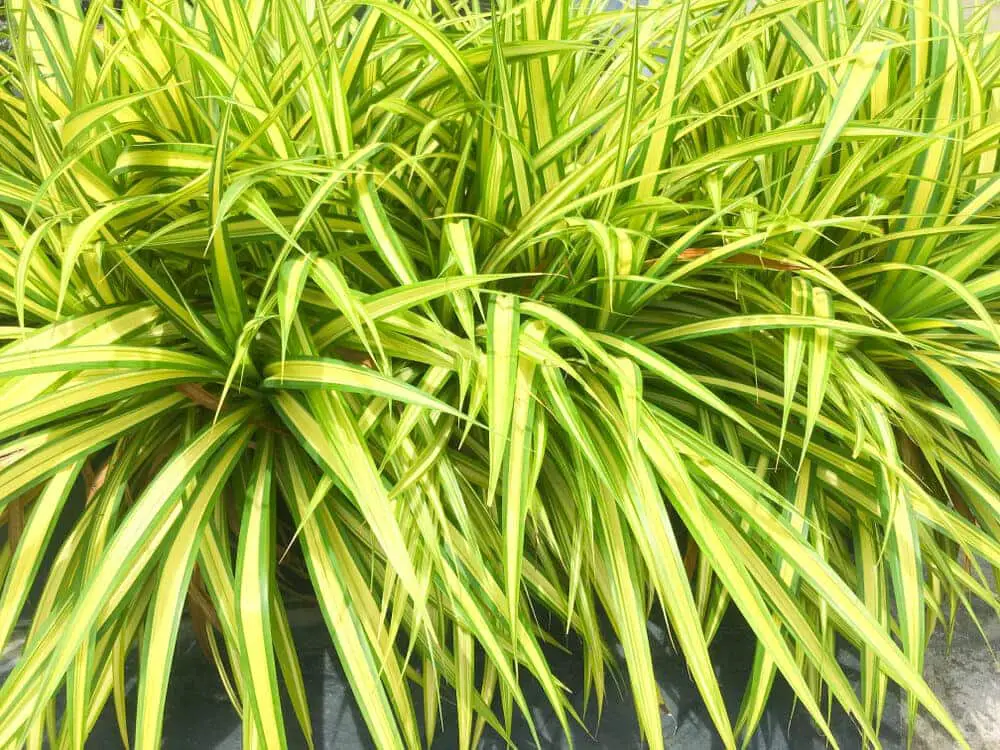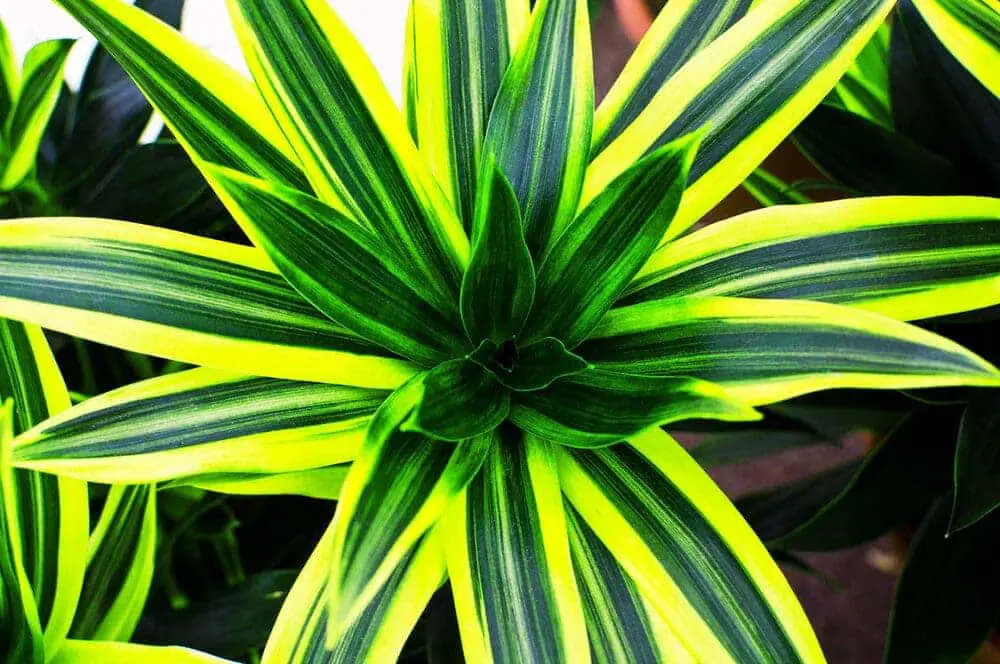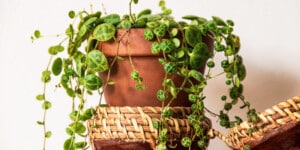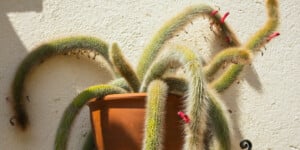The Dracaena Lemon Lime plant has gorgeous foliage and doesn’t take a lot of time or effort to care for.
This plant is also known as the Dragon Blood Tree, or simply the Dragon Tree. It is native to Africa and considered to be one of the most beautiful plants of its kind.
Dracaena Lemon Lime Care Guide
1. Light Requirement
These plants can become easily damaged when exposed to direct sunlight, even for a short period of time. It is important that you provide it with medium, indirect light for the best growth results. While they can withstand bright sunlight during the afternoon, it should never be direct.
Bright, direct sunlight can rapidly scorch the leaves of this plant. In fact, it doesn’t take much direct sunlight exposure for it to become damaged beyond saving. If you notice the leaves on this plant becoming pale, it probably means that it is receiving too much bright light.
2. Water
The drought resistant nature of the Dracaena Lemon Lime plant means that it doesn’t need to be watered very often. You will only have to water this plant once in a while. As a good rule of thumb, wait until the soil is fairly dry before watering.
Over watering can quickly become a major problem with these plants. Too much water can lead to root rot, which presents as browning leaves. Avoid using unfiltered tap water, as it tends to contain chlorine and other chemicals that could harm your plant.
3. Climate
This plant can be grown successfully in USDA hardiness zones of 10 through 12 and heat zones of 1 through 12. It grows best in warm, humid climates that aren’t particularly sunny.

4. Soil
Make sure that you keep this plant in soil that drains quickly with good aeration. The soil should be loose as well. Lava rock in the soil can help with encouraging normal growth.
5. Temperature
A temperature range of 70 to 75 degrees Fahrenheit is best for these plants. They can survive at temperatures as low as 53 degrees, but not for very long. It is therefore important that you take it inside when the weather starts getting colder.
6. Repotting
When you go about repotting this plant, you’ll want to use a container one size larger with fresh potting mix. The container should be about two inches larger in diameter with a hole to allow for adequate drainage.
It is a good idea to water this plant the day before you repot. Bring up the soil with your hands and gently bring the root ball up and put it in the container. Put the soil in the new pot, making sure it is tightly packed around the root ball. Keep the soil moist while the roots are still becoming established.
7. Speed of Growth
These plants grow at a moderate speed when they are grown under ideal conditions. This means medium, indirect light.
8. Height and Spread
When these plants are fully matured, they can stand 8 feet tall with a spread of three feet.
9. Flowers
It is possible for these plants to flower, but it is not very common. The white flowers that is does produce in the summer months are quite striking.
10. Trimming
If you want to maintain a neat and tidy appearance with your plant, occasional trimming will be necessary. You’ll want to cut back the plant’s lower leaves. These leaves fall off as the plant matures over time.
If you find that this plant is outgrowing its allotted space, you’ll want to prune some of the empty stems. This will make the plant look a lot nicer and keep it from spilling over into unwanted territory.

Is the Dracaena Lemon Lime Plant Poisonous?
Dracaena plants are considered to be very toxic to cats and dogs. If you have any of these pets around the house, you will need to be careful about where you keep this plant.
How to get Dracaena Lemon Lime Plants to Flower
If you want to get this plant to flower, you will need to provide it with a consistent source of bright, indirect light. Medium to bright light is the best way to get this plant to bloom, though it can be difficult even under ideal conditions.
You can also try fertilizing your plant, which should be done in the spring and into autumn. An organic fertilizer that is meant for houseplants will be best. While there is no guarantee when it comes to getting these plants to bloom, this is your best shot.
Keep reading: Philodendron Selloum Care & Growing Guide
Common Dracaena Lemon Lime Plant Diseases
Leaf Spot Disease is a fairly common problem with these plants. It usually presents as red or tan spots with yellow halos on freshly formed leaves. It is important that you cut these leaves off to minimize overall damage to the plant.
If you notice the leaves on your plant dropping, it could mean that you are over watering it. It’s also possible that the soil or container is not allowing for proper drainage. Keep in mind that the leaves on these plants naturally drop as part of its normal growth process.
Also read:
Conclusion
- The Dracaena Lemon Lime plant needs medium to bright, indirect light to grow normally and remain healthy.
- These plants are fairly drought-tolerant, so you don’t need to water them very often.
- You should wait until the plant’s soul is fairly dry before watering it.
- You can grow these plants in hardiness zones of 10 through 12.
- Fast-draining, rich soil is best for these plants. It should be mixed with lava rock for the best results.
- A temperature range of 70 to 75 degrees Fahrenheit is ideal for these plants, though they can survive for short periods at colder temperatures.
- When repotting this plant, make sure to use a new container that is about two inches larger than the previous one.
- While these plants don’t often bloom, their white flowers are quite beautiful.
- If you see any brown or yellow spots on the leaves, cut them off immediately. This indicates Leaf Spot Disease.
Victoria is the owner and main author of hobby plants. She loves spending her free time in her garden planting and taking care of her plants. Victoria hopes you enjoy the content here!
![What Are The Types Of Dracaena Plants [Answered] What Are The Types Of Dracaena Plants [Answered]](https://www.hobbyplants.com/wp-content/uploads/2022/07/types-of-dracaena-plants-300x158.jpg)
![Mother Of Thousands Plant [Complete Plant Care Guide] Mother Of Thousands Plant [Complete Plant Care Guide]](https://www.hobbyplants.com/wp-content/uploads/2022/07/mother-of-thousands-plant-300x158.jpg)





![Majesty Palm Plant Care: [Complete Beginner's Guide] Majesty Palm Plant Care: [Complete Beginner's Guide]](https://www.hobbyplants.com/wp-content/uploads/2022/08/majesty-palm-care-300x158.jpg)
![Exotic Angel Plant Care: [Complete Beginner's Guide] Exotic Angel Plant Care: [Complete Beginner's Guide]](https://www.hobbyplants.com/wp-content/uploads/2022/08/exotic-angel-plant-care-300x158.jpg)
![Snow White Waffle Plant: [Complete Care Guide] Snow White Waffle Plant: [Complete Care Guide]](https://www.hobbyplants.com/wp-content/uploads/2022/08/snow-white-waffle-plant-300x158.jpg)
![Waffle Plant Care: [Complete Beginner's Guide] Waffle Plant Care: [Complete Beginner's Guide]](https://www.hobbyplants.com/wp-content/uploads/2022/08/waffle-plant-300x158.jpg)
![Bird Of Paradise Plant Care: [Complete Beginner's Guide] Bird Of Paradise Plant Care: [Complete Beginner's Guide]](https://www.hobbyplants.com/wp-content/uploads/2022/08/bird-of-paradise-plant-300x158.jpg)